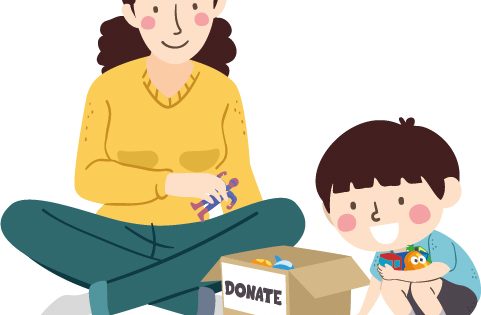As a parent, dealing with temper tantrums is common. But have you encountered a child having a meltdown? Meltdowns are typically experienced by autistic individuals. It may be difficult to distinguish between a meltdown and a tantrum for those who are unaware of the differences.
What is a meltdown?
A meltdown is an intense involuntary reaction causing someone to lose control of their behaviour due to an overwhelming situation. Autistic individuals of any age can have meltdowns, not just children. It is important to note that a meltdown is not a bad behaviour or a form of manipulation. It is also not due to bad parenting. Since autistics often struggle with communication difficulties, sensory differences, and emotional regulation, they are more susceptible to meltdowns.
It is important for everyone, not just parents, to understand what a meltdown is. Meltdowns are incredibly taxing, both mentally and physically, and are one of the most misunderstood parts of the autistic experience. In children, this is often confused with tantrums.
Meltdowns vs Tantrums
| Meltdowns | Tantrums |
|
|
Meltdown triggers
Meltdown is a diverse experience that holds a different meaning to different autistic individuals but these are some of the common triggers:
- Sensory overload, e.g. due to strong smell or taste, loud noises, flickering lights, being in a crowd, etc.
- Changes in routine, life or environment, e.g. moving to a new house, sudden changes in school schedule
- Challenges in communication
- Anxiety or stress
- Loss of autonomy (choice and control)
Signs of a meltdown
Here are some behaviours that may be shown during a meltdown:
- Biting
- Hitting or punching
- Kicking or foot-stomping
- Running off (eloping)
- Stimming (self-stimulatory behaviours used by an autistic person as a calming method, e.g. rocking, humming, finger flicking)
- Self-injury, e.g. banging their head, hitting themselves, or pulling their own hair
- Throwing and breaking objects
- Vocal outbursts, e.g. crying, sobbing, yelling, name-calling, or intense screaming
- Zoning out
Anticipating a meltdown
If you are supporting an autistic child, it is important to learn to anticipate a meltdown.
- Recognise triggers. Whenever a meltdown happens, take note of the possible triggers. Patterns may emerge. Once you have identified your child’s trigger, find ways to avoid or minimise it.
- Keep an eye on early signs. Before a full-on meltdown, an autistic child may show signs of distress, e.g. biting nails, covering ears with hands, irritability, stimming. Take steps to remove the cause or move the child to a calmer environment.
- Prepare sensory aids/self-soothing tools, e.g. sensory toys, a weighted vest/blanket, sunglasses, noise-cancelling headphones, “chewy tops” for pens/pencils, etc. These can help to comfort and calm them during difficult situations.
- Plan and practise coping strategies. Develop suitable strategies that your child can follow whenever they start to feel overwhelmed or stressed. Practise with your child when they are calm so that they can self-advocate and apply these strategies when needed.
Supporting a child during a meltdown
The key is co-regulation. A child needs to first learn how to regulate with others before he or she is able to use the regulation tools independently. Frequent co-regulation is a process that leads to self-regulation.
- Stay calm. Before we can invite them into our calm, we need to self-regulate first. Focus on taking deep breaths and consider sipping some water.
- Reframe the behaviour. Remind ourselves that the child is struggling and the meltdown was not intentional.
- Give them space. Don’t try to stop their behaviour but stay nearby to ensure their safety. Keep other people away.
- Decrease stimulation. Limit talking as this will add further stress.
- Adjust the environment. Look around and see what can be done to help your child calm down, e.g. turning down the light or music, closing a door, asking others to leave the room.
- Find a safe space. If it is possible or there is a risk of injury, try to guide them to a safe, quiet room.
- Use the preferred calming method. If you know something that can calm your child during a meltdown, offer it. This may include a favourite toy, playing a calming music, deep breathing, punching pillows, rubbing their back, tight hugs, etc.
- Allow space for ‘autistic regulating strategies’. We now know that stimming is a form of self-regulation and should not be stopped or changed.
- Don’ts: Don’t shame or threaten your child. Avoid trying to reason or argue with them. Never leave them alone.
Once the child is feeling better, show them that you understand. Validate their feelings by telling them that you can see that the meltdown was really upsetting and distressing. Find out what could have caused the meltdown; this may be communicated through augmentative and alternative communication (AAC) in some autistic children.
When a meltdown occurs in public, do not feel embarrassed. Remember, your child is not trying to give you a hard time; they are having a hard time. Hence it is crucial to be empathetic and kind during a meltdown. However, if you are struggling to support your child, talk to your child’s paediatrician. They can suggest guides and therapies to support your child’s emotional development.






